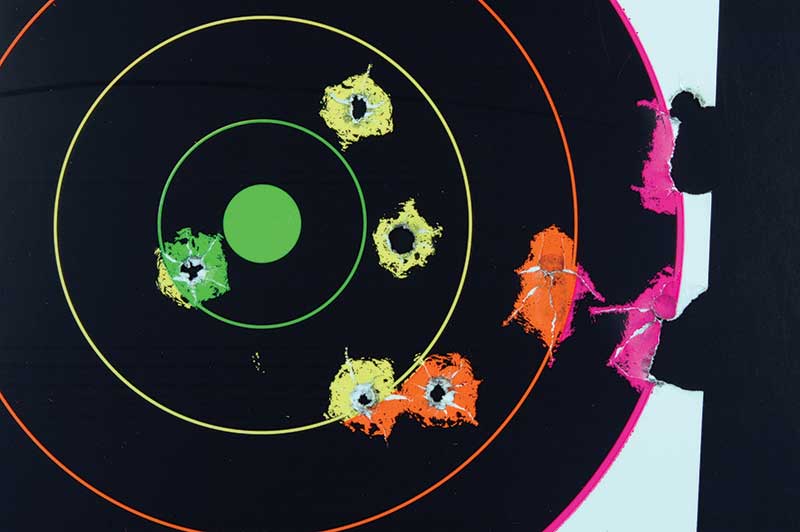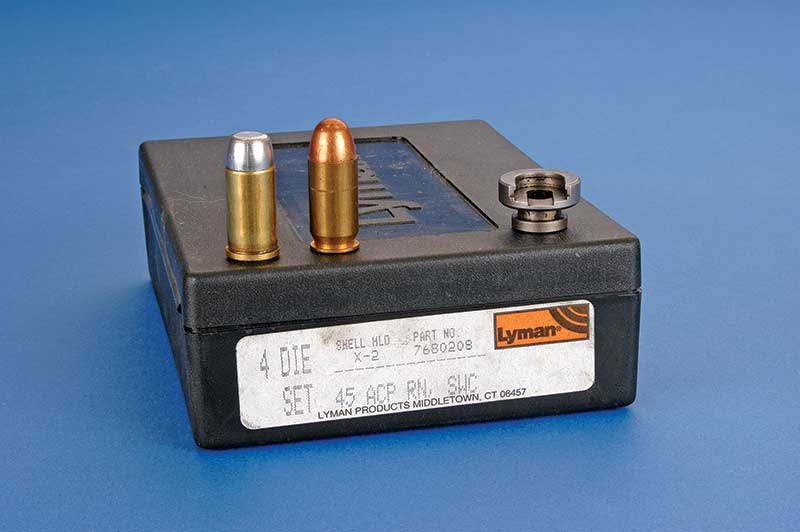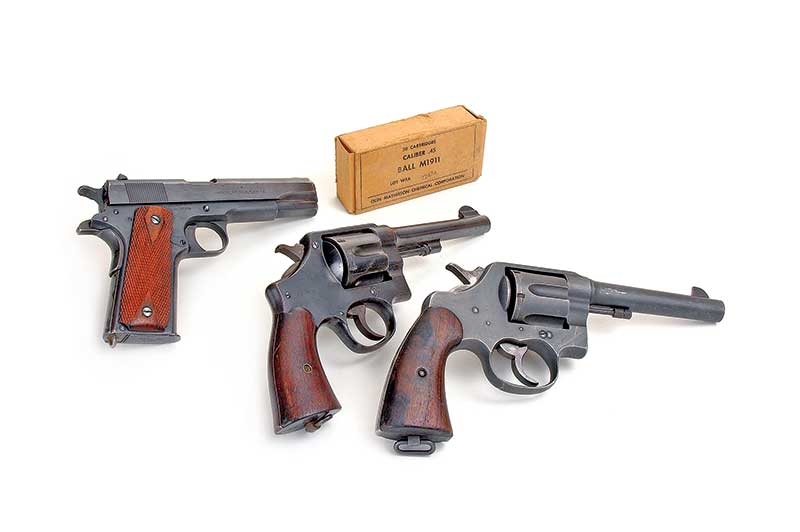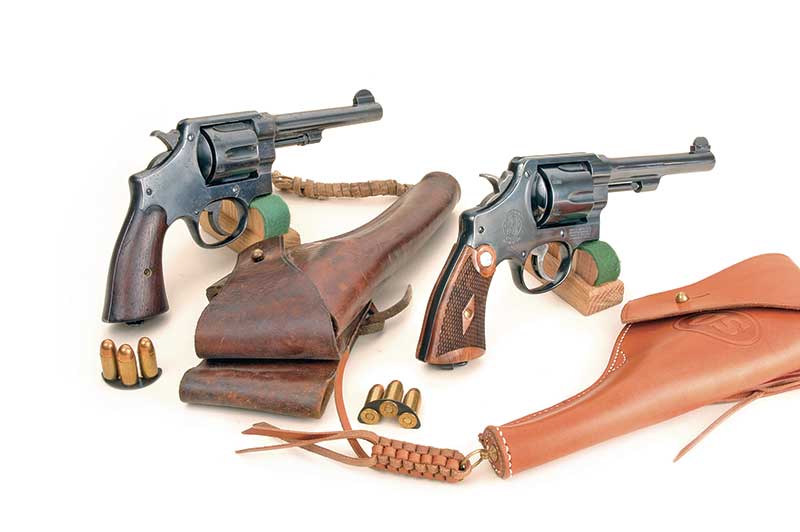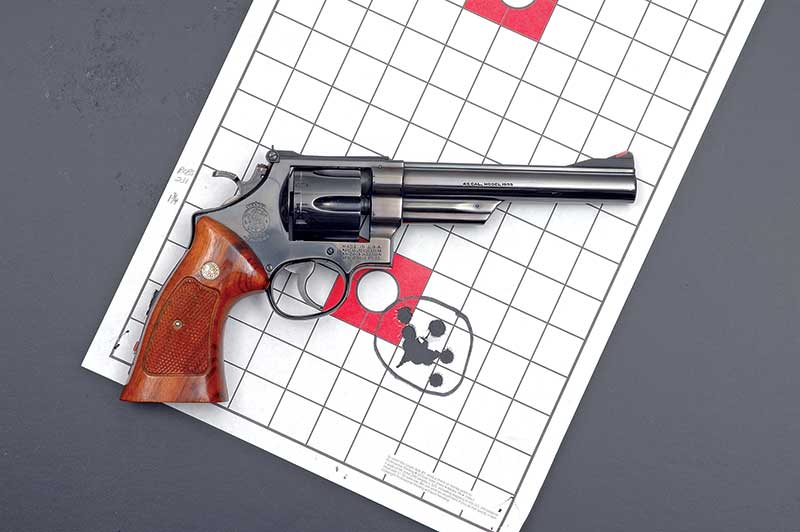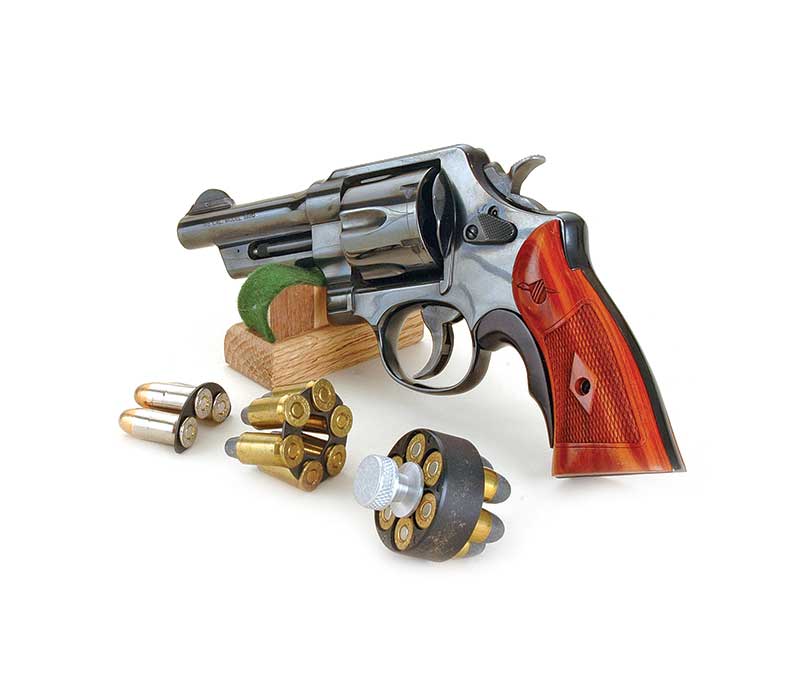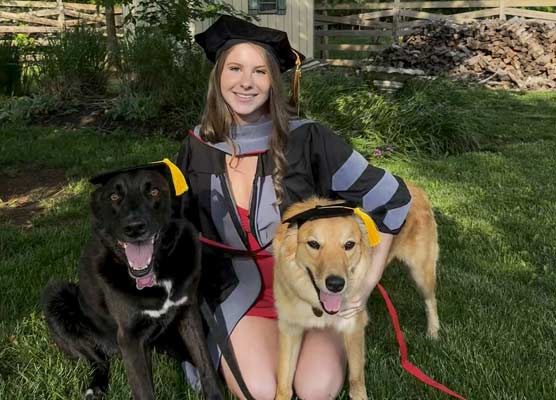The Best Ever Revolver Cartridge!
Has Duke Lost His Marbles?
What’s the best-ever big-bore revolver cartridge? I’m not talking about something chambered in a bazooka-length revolver fitted with a bipod like I saw at SHOT Show 2011. Nor am I talking about the sort of revolver and cartridge you would want in order to save yourself from being eaten by some critter or another. The sort of revolvers I’m talking about are ordinary-sized ones you might have in a holster or in a drawer by the bed at home.
In these pages I’ve not hesitated to point out what I think are not the greatest revolver cartridges ever, despite the genuflecting some people do at the mere mention of them. Those are namely the .44 Special and .45 Colt. Both are good old calibers for which I own several handguns each. But the best ever? No way! Now its time to point out what I do think is the very best, all around revolver cartridge. Are you ready?
Huh? What?
It’s the .45 ACP! That’s right, the .45 Automatic Colt Pistol (ACP) is the very best ever round for ordinary, everyday revolvers. Its case capacity is correct for its bullet weight and ballistics, with no tiny charges of powder floating around in a huge case meant originally for black powder. It was the first revolver cartridge used in “speed-loaders,” otherwise known as half-moon clips. And now there are full-moon clips too. And, it’s capable of fine accuracy from some guns. It’s one of the easiest and most versatile cartridges for reloaders, and it has a stepbrother identical except for having a rim on the case, if that trips your trigger instead of fiddling with clips. That, of course is the .45 Auto Rim.
In 1917, when the United States stuck its nose in a European war, it did it without having enough weapons for its army. In regards to pistols, we were sorely shot of Model 1911s. Smith & Wesson and Colt already had big bore revolvers, so it was a simple matter to make them for .45 ACP, except there was no rim for the star-type extractors for case ejection. Hence half-moon clips came into existence. Together, over two years, those handgun manufacturers turned out nearly a third of a million US Model 1917 revolvers for the American government.
Mating the .45 ACP with big-frame revolvers was such a good idea that post WWI both companies kept them in their catalogs: Colt until 1944 and S&W until — well until now, with some recesses along the way. Besides 1917s, S&W’s versions have been Models 22, 25 and 26. They had names instead of numbers prior to 1957. The S&W ’17s and Model 22s have been fixed sight “service revolvers” while the Models 25 and 26 have been intended for paper punching and had proper adjustable sights for such. Along the way I’ve owned them all. Colt’s only .45 ACP revolver was their New Service, along with a target-sighted version called Shooting Master. While I’ve owned several Colt 1917s, I’ve never even seen a Shooting Master .45 ACP. I don’t know vintage prices on the Smith & Wesson .45 ACP revolvers, but an original 1935 Colt catalog says their fixed sight New Service cost $34 while the target-sighted version was $52.50.
Auto Rim
About 1920, the Peters Cartridge Company responded to shooter demands for a .45 ACP case with a rim, and so the .45 Auto Rim was born. Because .45 ACP revolvers were engineered to include the thickness of half-moon clips in their headspacing, the rims of .45 Auto Rim cases look like they have mumps. In other words they are far thicker than any other revolver cartridge rims. Of course that means a .45 Auto Rim-specific shell holder is necessary. Otherwise it can be reloaded with ordinary .45 ACP dies.
When Remington absorbed Peters they kept the cartridge going until relatively recent times. To the best of my knowledge Black Hills, CorBon, Buffalo Bore and DoubleTap are the other makers producing .45 Auto Rim now. Whereas .45 ACP factory loads have always used jacketed bullets, in the past .45 Auto Rims were loaded with the same, but eventually roundnose lead ones became their standard.
Normally the idea of lead-alloy bullets goes hand in hand with revolvers, except for one factor. The US Model 1917s by both S&W and Colt were cut with fairly shallow rifling because they were first and foremost intended for FMJ military ammunition. And that led me to one of those conundrum thingies.
For my collection, I’ve purchased Colt and S&W 1917s. The former shoots even fairly soft lead alloy bullets like a champ. The latter keyholes all lead alloy bullets, even very hard ones poured of Linotype. And I have checked all its dimensions and cannot find a reason why that happens. It shoots jacketed bullets perfectly adequately. This also adds to the conundrum. My new S&W Model 22 Thunder Ranch revolver, and the 1917 recreation S&W sold a few years back, both have rifling appearing very shallow. They shoot lead-alloy bullets nicely.
Some Particulars
A great portion of my reloading efforts these past few years have been with .45 ACP, greatly spurred because I bought a couple of submachine guns as part of building a World War II firearms collection. Most of that reloading has been with 220- to 225-gr. lead alloy roundnoses. Powered by either 5 grains of Bullseye or 5.4 grains of HP38, those bullets slide right through the full autos and 1911s. They do fine in the sixguns too. Except that contrary S&W ’17! I won’t take up a lot of space with a load chart. Suffice it to say the above two powder charges with 220- to 225-gr. lead bullets give 800 to 825 fps from the 5½” barrel of a Colt ’17, whereas some 1966 dated military surplus 230-gr. FMJs gave 843 fps from the same Colt.
However, when loading just for the revolvers there is one bullet head and shoulders above all others. That is Redding/Saeco’s cast bullet #453 for a 225-gr. full wadcutter. Drive that thing to about 860 fps with 4.7 grains of Red Dot in either ACP or Auto Rim case and it strikes like the hammer of Thor.
Shooters of .45 ACP revolvers have available all the vast array of that caliber’s factory ammo, plus the few .45 Auto Rim loads still around. But here’s a tip: CCI’s .45 ACP shotshells warned, “Do Not Fire In Revolvers.” I took that as a personal challenge and did so. A wooden mallet was required to hammer open the cylinder of my rare and valuable Model 1950 Army!
In the 45 years I’ve been buying handguns, I’ve owned scores of revolvers chambered as .44 Special, .45 Colt and .45 ACP/.45 Auto Rim. So, I’m speaking from experience here. Unless you want to shoot black powder, or have a big case of nostalgia, the .45 ACP/.45 Auto Rim will serve you best.Let the letters begin. Sorry Your Editorship!

